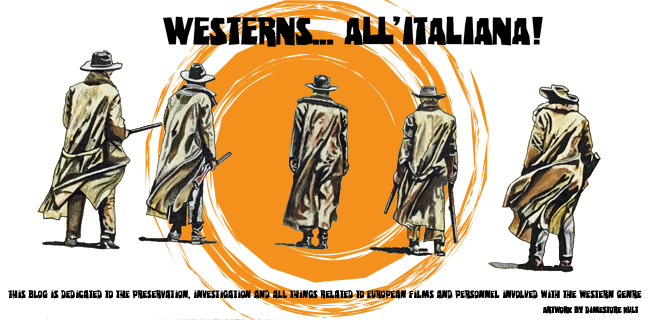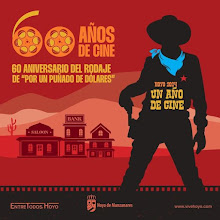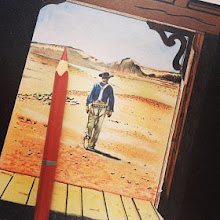‘White Fang’ Review: Jack London’s Classic Story Is
Vividly Reimagined in Lush Animated Offering — Sundance 2018
As part of the well-regarded Sundance Kids section,
Alexandre Espigares' take on the beloved wolf-dog offers up warm-hearted charms
and often stunning animation.
By
Kate Erbland
Jack London’s
“White Fang,” the classic story of a wild wolf-dog rendered against the harsh
environment of gold-rush Alaska, has spawned a number of cinematic adaptations
— a well-regarded 1991 live-action feature starring Ethan Hawke, a 1993
animated series — but it’s in the hands of Luxembourgish animator Alexandre
Espigares that the tale comes to its most vivid life. Adapted from London’s
novel by a cadre of screenwriters (there are three listed in the film’s
official press kit: Dominique Monfery, Philippe Lioret, and Serge Frydman),
Espigares’ film captures the essence of London’s hard-knock story while
reimagining it for a slightly younger audience (in short, it’s still traumatic,
but not traumatic enough to drive away the audience who will also love it so
very much).
That the film
includes some star-studded voice talent for this American version (the film
will be translated for a variety of territories), including Nick Offerman,
Rashida Jones, Paul Giamatti, and Eddie Spears, is a nice touch, but even their
contributions are overshadowed by the lush animation and memorable moments that
make “White Fang” such a standout. While the film mostly adheres to the plot
laid out in London’s 1906 novel, Espigares and his collaborators have lightened
up some of its worst moments (no need to worry about that pack of lynx kittens)
and a time-flipping narrative helps dilute the tougher stuff that comes later
in White Fang’s story.
And yet, it
starts with heartbreak: White Fang’s final dog fight, where he’s billed as the
“legend of the Klondike” and the most fearsome creature in town. He collapses
before the fight can even get going.
“White Fang” then
slips back to his time as a pup, trundling around the wilds with his mother
Kiche, and giving way to a wordless and wondrous exploration of the natural
splendor of Alaska. The painterly style that informs the film’s animation is
best suited to these sequences, rendering White Fang, Kiche, scores of fellow
animals, and their forest home in evocative style, so carefully crafted that
you want to reach out and touch every leaf and tuft of fur. Despite such
intense beauty — there’s one scene that sees White Fang and Kiche observing
falling snow that’s already a frontrunner for best of the year — “White Fang”
never lets the worries of the real world slip away, and the two wolf-dogs are
constantly left to contend with hunger, fear, injury, and worse.
There are threats
on all sides (that first sequence makes it clear that White Fang will
eventually fall prey to the worst of them), and the introduction to still more
humans speaks to the scant weaknesses of the film: Most of the human characters
don’t look as lovely as White Fang and his mother. They appear harsh and
big-eyed, even when they’re friends (and if they’re foes, all the more
horrifying; Giamatti’s character is a wretch for the ages), and their dialogue
often feels stilted and limp. When “White Fang” focuses on its real stars —
animals, Alaska, the spread of untamed country — it’s as visionary as any
animated film. Placed alongside ham-fisted humans, it loses its power.
That may be the
point. London’s novel never skimped on portraying the darker sides of human and
beast, and “White Fang” is as much about man’s need to confront the wildness in
order to move into domesticated space as it is about unbroken animals doing the
same thing.
As White Fang
comes into contact with still more humans, he’s forced to contend with their
very different approaches to the world and those that inhabit it. From Grey
Beaver (voiced by Spears), his first human master — here portrayed as far more
virtuous and loving than London originally wrote him — to the evil Beauty Smith
(Giamatti) and the warm-hearted Weedon Scott (Offerman), “White Fang” navigates
both its lead and its audience through the best and worst that mankind has to
offer.
The film makes
the same argument for animated offerings, deftly moving between scenes as
stirring as dazzling and lavish as could be provided by any live-action film,
before swinging towards an uneasy depiction of the human world. The power and
majesty of White Fang, a truly wonderful protagonist, still makes a journey
worth taking.
Grade: B
General Release
March 28, 2018
Croc blanc –
French title
White Fang –
English title
A 2017, French,
Luxemburg, U.S.A. animated co-production [Bidibul
Productions, France 3
Cinema (Paris)]
Producers: Joshua
M. Cohen, Leah Holzer, Clément Calvet, Lilian Eche, Jérémie Fajner, Christel
Henon, Peter Saraf, Marc Turtletaub, Lucie
Bolze
Director: Alexandre
Espigares
Story: White Fang by Jack London (John Chaney)
Screenplay: Serge
Frydman, Philippe Lioret, Dominique Monfery
Animation: Stéphane
Gallard [3D, color]
Music: Bruno
Coulais
Running time: 85
minutes
Cast:
Animated
characters












No comments:
Post a Comment